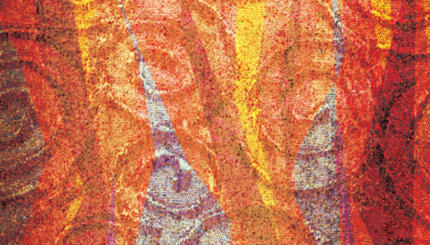“This is the Torah which Moses placed before the people of Israel. These are the testimonies, the laws and the judgments which Moses spoke to the children of Israel when they went out from Egypt” (Deuteronomy 4:43-44). When the Torah speaks of Torah, it is fairly clear that the word means “instruction” and does not refer to the specific book of the Torah as we have it. Nevertheless, under the influence of statements like this one from Deuteronomy, Jews throughout the generations have treated the book of the Torah, as a whole, as the revelation of God to Moses on Mount Sinai, delivered to the people of Israel. Yet, even in ancient times, Jews expressed opinions that parts of the Torah may have been revealed at different times.
 The question of the origin of the Torah is not merely one of academic interest, like whether Shakespeare actually wrote Shakespeare’s plays. Connected to the question of the authorship of the Torah is the question of the cultural and legal authority of the text. Since the Torah is the beginning of all later Jewish discussions of ethics and normative practice, claims about its origins can have profound implications for adherents to those ethics and behaviors. Responses to questions concerning the divine authorship of the Torah as we have it today are not uniform; many Jewish thinkers have claimed that the Torah is authoritative whether human participation in its authorship is demonstrable or not. Our concern, however, is not the response to the critique of divine authorship but the the nature of the arguments for and against divine authorship. Arguments for and against the divine authorship of the Torah can be divided into three categories: understanding of the literary nature of the text, conception of the relationship of the text to Israelite history, and one’s theological perspective on the Torah.
The question of the origin of the Torah is not merely one of academic interest, like whether Shakespeare actually wrote Shakespeare’s plays. Connected to the question of the authorship of the Torah is the question of the cultural and legal authority of the text. Since the Torah is the beginning of all later Jewish discussions of ethics and normative practice, claims about its origins can have profound implications for adherents to those ethics and behaviors. Responses to questions concerning the divine authorship of the Torah as we have it today are not uniform; many Jewish thinkers have claimed that the Torah is authoritative whether human participation in its authorship is demonstrable or not. Our concern, however, is not the response to the critique of divine authorship but the the nature of the arguments for and against divine authorship. Arguments for and against the divine authorship of the Torah can be divided into three categories: understanding of the literary nature of the text, conception of the relationship of the text to Israelite history, and one’s theological perspective on the Torah.
Assessments of the Literary Character of the Torah
Scholars have noted the repetitions, apparent contradictions, and differences in vocabulary in different sections of the Torah. For the rabbis who wrote the midrash (traditional, homiletical interpretations of Scripture), those phenomena were seen as part of additional information, encoded into the text of the Torah to serve as the basis for oral interpretation. For example, if a law was repeated, the first case might be seen as a warning and the second for punishment. Contradictory texts referred to different situations. Differences in usage were not seen as alternate forms for the same concept, but as different concepts.
Critical scholars look at the same phenomena and see evidence of different sources. Recognizing that some of these differences are accompanied by different uses of the name for God, scholars began to identify different sources in the Torah: materials which shared a variety of characteristics including the use of the four letter, unpronounced name of God (comprised of the Hebrew letters yod-heh-vav-heh) were seen as deriving from a single source. Scholars named that source J after the German transliteration of the letter yod. Other sources were identified based on other shared characteristics and vocabulary, including the “E” source, named after its use of the name Elohim,. Materials from the book of Deuteronomy, and associated with the language and ideas of that book are called D, and materials from Leviticus and throughout the Torah that reflect the language and concerns of the Aaronid priesthood are called P. The consistency within the various hypothetical documents and an editing process that preserved the basic characteristics of the original sources explained the repetitions and contradictions.
With your help, My Jewish Learning can provide endless opportunities for learning, connection and discovery.
Other literary scholars have looked at the Bible and have seen remarkable consistency and large literary structures and themes, like D.N. Freedman’s work on the centrality of the Ten Commandments in the overall narrative structure of the Bible. This kind of literary analysis at least points to a unified editorial process (if not a divine author). Many scholars, including Freedman, who acknowledge underlying sources, nevertheless focus their study on the narrative integrity of the received text of the Torah.
Although roundly rejected in academic circles, members of certain Orthodox Jewish communities have made claims about the Torah’s literary character that, they assert, prove not just the unity of the Torah but the divinity of its authorship. Specifically, some have claimed to identify underlying codes revealed by equidistant letter skipping in the text of the Torah. These codes, assert advocates of this approach, were built into the text of the Torah by God precisely for our computer-enabled generation in order to counter the Bible critics. Interestingly, Islamic researchers of the Koran are “proving” the divinity of their holy text in the same way.
Assumptions About History & Prophecy
The first and most obvious concern that historians raised about the unity of the text of the Torah deals with the fifth book, Deuteronomy. The focus of the book on the unity of the people of Israel and its unified worship in a single place, and the illegitimacy of any worship outside of Jerusalem are concerns that do not seem to fit with most of Israelite history until the late seventh century BCE. Strikingly, at that point, during the reign of King Josiah, a book is “discovered” during repairs to the Temple, which become the basis for “reforms” that align almost perfectly with the language and concerns of the book of Deuteronomy.
For historians, this establishes the promulgation of the book of Deuteronomy as having occurred during the reign of Josiah. More literal believers accept the biblical account, and may acknowledge that it was, indeed, the book of Deuteronomy which had been lost. Its loss explains the lack of adherence to its norms in the intervening years as well as the zeal with which Josiah instituted its reforms.
Another example is the story of the golden calf in Exodus 32. After Solomon’s reign, the northern kingdom of Israel separated from the southern kingdom of Judah. The northern king Jeroboam established cult centers at Bethel and Dan, setting up golden calves as objects of worship and announcing, “Here are your gods, Israel, who brought you up from Egypt” (1 Kings 12:28). If a story of Israelite rebellion in the worship of a golden calf had been part of the Torah prior to Jeroboam, it is difficult to believe that Jeroboam would choose the same symbol, and it is inconceivable that the book of Kings would not condemn him explicitly for following that bad example. Consequently, historians see the Torah’s golden calf story as a polemic against Jeroboam, cast back into Israel’s mythic past. A traditional explanation would assert that Jeroboam’s adoption of the golden calf merely shows how rebellious and twisted he was; the book of Kings would not have to refer back to the Exodus incident because it would have been obvious and self-evident.
Theological Understandings of the Torah
Classically, Torah is understood as the content of God’s revelation at Mount Sinai. For some, that means that the exact words of the Torah, each word and each letter comes from God. Unlike any other prophecy, the revelation to Moses was perfect and clear; for many traditionalist Jews, these assumptions are necessary in order to remove any question of human imperfection or mediation from the foundation of all Jewish belief. If the Torah isn’t true, some assert, then all of Judaism is based on something false. Tradition, according to this stance, provides an adequate lens through which to understand Torah. Some who maintain this position question scientific beliefs that don’t accord with a simple reading of the Torah—they may say, for instance, that dinosaur bones were planted by God in order to test our faith—and some harmonize or explain away scientific findings that disagree with Torah, arguing, for example, that the length of the days of creation could have been millions of years long, thereby synthesizing evolution and the creation story of Genesis.
For many modern theologians, beginning with Martin Buber, the content of revelation is not the Torah itself. Revelation is the encounter with God; Torah is the human testimony that Israel experienced this encounter. For some moderns, the idea that God actually spoke is theologically problematic: If God does not actually have an outstretched hand, why should God have vocal cords? More to the point, however, is the belief that the human component in determining God’s will (which is later expressed through interpreting the Torah) is often seen as an ongoing process that had its origins in the Sinai experience itself. In this view, God is revealed in revelation, and Israel responded in each generation with torah (teaching) which was finally canonized as Torah and then supplemented with Oral Torah.
An intriguing approach expounded by the contemporary scholar David Halivni is that God indeed revealed a complete Torah to the people, but Israel sinned. Immediately upon receiving the Torah, the Israelites fell into the idolatry of the golden calf, and not until the return from the Babylonian exile under Ezra did Israel re-affirm its commitment to God. From Moses to Ezra, the Torah was preserved in a fragmentary state, but under Ezra, revelation was restored. The Torah that Ezra restored, however, has all of the signs of imperfection and human composition that the critics have identified, but the Torah is nonetheless the best restoration possible. Halivni’s solution acknowledges the arguments of the critics, while affirming a faith in God’s revelation of real objective content to the people of Israel.
Of course, there doubtless are relationships between these different beliefs; theology influenced the early biblical critics who influenced the historians who influenced later theologians; traditionalist explanations have been sharpened to respond to the claims of the critics. Nevertheless, it is clear that the discussion of how one understands the origins and authorship of the Torah is a conversation that needs to be engaged at least through the various dimensions discussed here.
Torah
Pronunced: TORE-uh, Origin: Hebrew, the Five Books of Moses.



